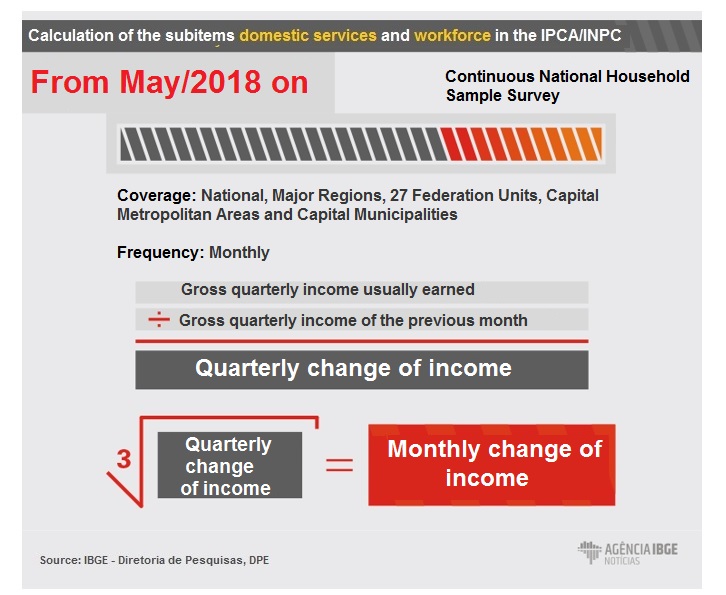Transparency
IBGE improves the calculation of domestic services for inflation indexes
May 22, 2018 09h00 AM | Last Updated: June 05, 2018 11h04 AM
The coming IPCA-15, to be released tomorrow, May 23, will present a new form of inclusion of domestic services in the housing unit, a change implemented in all consumer prices indexes – IPCA, IPCA-15 and INPC. It is the second time the institute effects a change in the inclusion of these subitems which, together, account for a bigger share of the IPCA (5.81%) than gasoline (4.33%), for example.

The National System of Consumer Price Indexes (SNIPC) used as a source, from 2007 to 2016, the Monthly Employment Survey (PME), from which it obtained the values of monthly income of categories of workers that compose the price index subitems. “The idea was to turn the change of income usually earned by the domestic worker, the firefighter, the electrician and by other professionals, into a change of costs for the household that hired those services”, says the IBGE coordinator of price indexes, Gustavo Vitti. PME used to encompassed six metropolitan areas and its last edition was released in February 2016.

With the end of PME, the substitute would be the Continuous National Household Sample Survey (Continuous PNAD), which had been in the field since 2012. There was a methodological restraint, though, as explained by Gustavo Vitti: “we did not have enough number of points in the series for a robust estimation of trends. That statistical modelling presupposes a reasonable figure, of 60 months, at least, to start having reliable estimates”.
For that reason, the IBGE had been using, from 2016 so far, the minimum wage change, which is obtained by adding the GDP change of two years ago to the annual change of the National Consumer Price Index (INPC) of the preceding year. When the GDP change is negative, only the INPC is considered. For example, to calculate the 2017 figure, one should consider the GDP change in 2015 (-3.8%), plus the INPC of (6.58%), but once the GDP was negative that year, only the INPC was used in the calculation. The IBGE calculates the twelfth root of that annual change to obtain the monthly change. So, there is a fixed percentage for every month.

Continuous PNAD will be part of that calculation from now on. In order to implement the change different teams from the IBGE worked in partnership with the National School of Statistical Sciences (ENCE) for two years. “Continuous PNAD is an excellent survey, but it has not been designed to generate price index figures”, explains Gustavo Vitti, and adds, “we are going to have the change of quarterly incomes of groups of occupations that form the subitems investigated in the price index and calculate the third root to obtain the monthly change”. As in the calculation of the minimum wage, income change will be calculated for Brazil, and then specified for the overall coverage of the IPCA and INPC.
The subsample microdata with the incomes of the occupations forming the IPCA and INPC subgroups will be made available on the IBGE website. The technical notes presented here present more detaila about this methodology update.



















